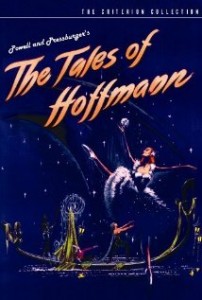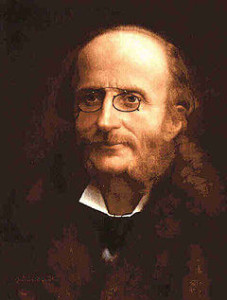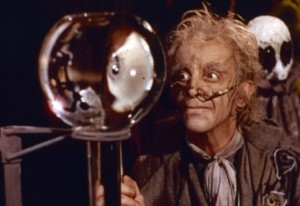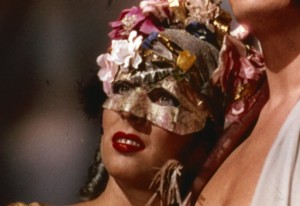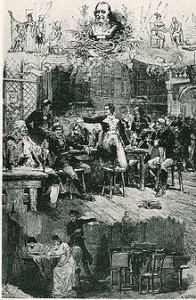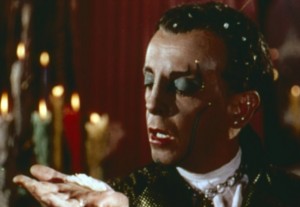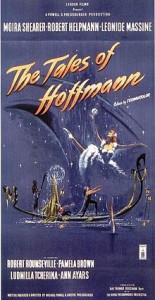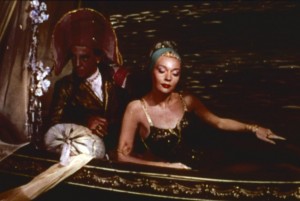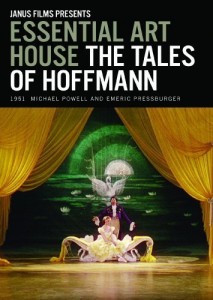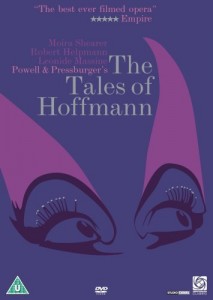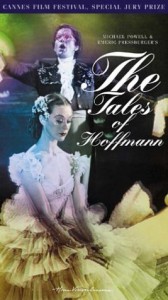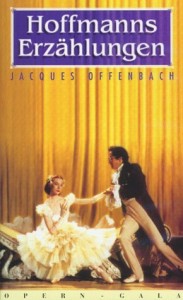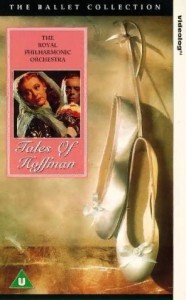The Tales of Hoffmann ***** (1951, Moira Shearer, Robert Helpmann, Robert Rounseville, Ludmilla Tchérina, Ann Ayars) – Classic Movie Review 1761
Writer/producer/director team Michael Powell and Emeric Pressburger set about in 1951 to try to repeat the success of their all-time great dance film The Red Shoes (1948) and cast Moira Shearer, Robert Helpmann, Leonide Massine, Ludmilla Tcherina and Frederick Ashton once again.
It is far from universally admired – Bosley Crowther of The New York Times called it ‘a vastly wearying show’. But certainly their film of Jacques Offenbach’s 1881 fantasy opera about a poet’s search for the elusive ideal woman is sensationally bold and inventive. With its eerily theatrical atmosphere, it’s also quite entrancing and mesmerising.
Powell achieves his ambition to make ‘a composed film’, a marriage of image to operatic music, with the entire opera pre-recorded to create the soundtrack, and the movie edited to the rhythms of the music, and no dialogue.
At the 1952 Oscars, it received two nominations, both for Hein Heckroth, for Best Colour Art Direction-Set Decoration and Best Colour Costume Design, but both awards went to An American in Paris. It had to be content with runner’s up prizes on the awards circuit. It won the Silver Berlin Bear for Best Musical at the Berlin International Film Festival in 1951 and a Special Award at the Cannes Film Festival in 1951 for the transposition of a musical work into a film.
The film is told in its original three acts as if it is being performed on stage in a theatre. Robert Rounseville plays the melancholy German romantic poet E T A Hoffmann, who reflects in turn on the three women he loved and lost: a mechanical performing doll Olympia (Moira Shearer), a Venetian courtesan Giulietta (Ludmilla Tchérina) and a celebrated composer’s consumptive daughter Antonia (Ann Ayars).
But first there is a prologue that takes place in the theatre of Nürnberg, where Hoffmann and his rival in love Councillor Lindorf (Robert Helpmann) hope to meet Stella (Moira Shearer), the prima ballerina who is performing The Enchanteed Butterfly. Lindorf intercepts a message from Stella to Hoffmann, who retires to a nearby tavern, starts drinking with the group of rowdy, singing students, and tells them the three stories of his misadventures in love.
The Powell and Pressburger brilliance is there in abundance in the astonishing mix of dance, music and film in a kitsch, rich and strange movie that’s both enchanting and weirdly disturbing, blending Expressionism and Surrealism. Among its special delights. Ludmilla Tchérina seduces as the 19th-century dominatrix Giulietta, there’s a menacing chorus of pan-sexual mannequins and Shearer’s dismembered head blinks at the audience.
Hein Heckroth’s production and costume designs, Christopher Challis’s riotous Technicolor cinematography and Frederick Ashton’s choreography are all quite dazzling. Ashton also appears and dances in the roles of Kleinsach and Cochenille.
Sung in English with the libretto by Dennis Arundell, based on the French text by Jules Barbier, the entire opera is pre-recorded to create the film’s entire soundtrack and the movie is choreographed and edited to the rhythms of the music, with the production completely without spoken dialogue. Only Rounseville and Ann Ayars (as Antonia) sing their own roles.
The other rousing singing is by Owen Brannigan (as Hermann/ Schlemil/Crespel), Dorothy Bond (Olympia), Grahame Clifford (Spalanzani/Franz) Bruce Dargavel (Coppelius/Dapertutto/Dr Miracle), Margherita Grandi (Giulietta) and Murray Dickie (Cochenille/Nathaniel), backed by the Sadlers Wells Chorus. Sir Thomas Beecham (who appears briefly with his baton at the end) conducts the beautiful music, played by the Royal Philharmonic Orchestra.
Perhaps because it simply doesn’t have the popular touch, it has long been underrated, and often regarded as a failure. But it’s been due for a critical re-evaluation for years, and now it can finally get one and receive its proper due. It’s been magnificently revived in a revelatory 4K restoration, containing previously unseen footage, from the original three-strip Technicolor negative, revealing all its feverish images in clashing yellows and purples.
Also in the cast are Léonide Massine as Spalanzani/ Schlemil/ Franz, Pamela Brown as the ubiquitous tomboy Nicklaus, Mogens Wieth as Crespel, Meinhart Maur as Luther, Richard Golding as Hermann (in the prologue and epilogue), Philip Leaver as Andrés, Edmund Audran (partner to Stella in Dragonfly ballet) and Lionel Harris as Pitichinaccio.
Restored by The Film Foundation and the BFI National Archive in association with Studio Canal, it was screened at the 2014 London Film Festival. The restored version runs 138 minutes (complete with its Intermission card before the final act) and the cut version runs 118 minutes. It includes a charming final credits sequence of all the performers and singers, not seen in any previous releases.
Challis, who died on 2012 aged 93, worked on more of the great British writing-directing team’s films than any other cinematographer. But his finest achievement was on their The Tales of Hoffmann.
© Derek Winnert 2014 Classic Movie Review 1761
Check out more reviews on http://derekwinnert.com/

